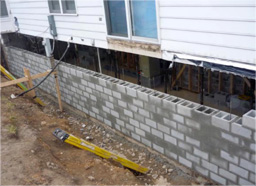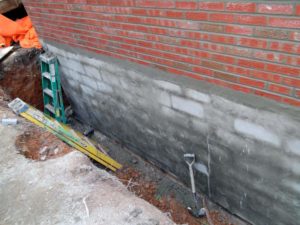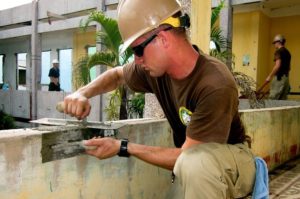Boats have anchors.
Cars have brakes.
And, homes have helical piers.
A helical pier is, according to www.builderonline.com, is a:
A helical pier is a manufactured steel foundation pin that is driven into the soil to a depth below frostline using hydraulic machinery. Helical piers are primarily used in heavy commercial work, but they’re also well-suited for backyard decks, additions, and foundation repairs.
Helical piers which are also known as “anchors”, screwpiles or piles. They are foundation solutions that are utilized to new foundations or repair existing foundations. They are not difficult to install and are mainly used when soil conditions prevent standard foundation repairs.
Helical piers are made by using steel shafts with helical shafts and are installed deep in the foundation underpinning elements constructed using steel shafts with helical flights. The shafts move to the deep below the foundation by twisting them into the foundation soil. Torque is monitored to estimate the pile capacity.
Piers, which are galvanized steel, have a seven foot shaft with a helical bearing plate welded to the end and a cap on top. Length depends on the condition of the soil. Smaller piers are used heavy, rock-filled soils and larger piers for softer, clay soils. The helical anchor/pile is 3” and welded to a central steel shaft. The load is moved from the shaft to the soil using bearing plates.
So, when do you need to install a helical pier? Here are five reasons to install a helical pier:
- They cause minimal damage to lawn and vegetation.
- Your home’s foundation experiences minimal trauma and there is no damage to it.
- Installation is completed in a small space.
- They can be installed in any weather.
- They are installed quickly with minimal traffic on your lawn.
- Can be installed to a any known load-bearing capacity.
M Taylor Enterprise has used helical piers in construction and foundation projects throughout Montgomery County Maryland. Projects have included tiebacks for walls that were bowing and leaning, new construction, old construction, sloped areas and also to help add lift for sunken concrete and stone slabs.
Hydraulic motors are used to quickly and safely install these supports and our team has extensive experience utilizing this effective source of foundation repair support.
Contact us at (301) 649-3406 or at matt@mtaylorenterprise.com if you think helical piers may be an answer to your particular project. Advice is always free.









